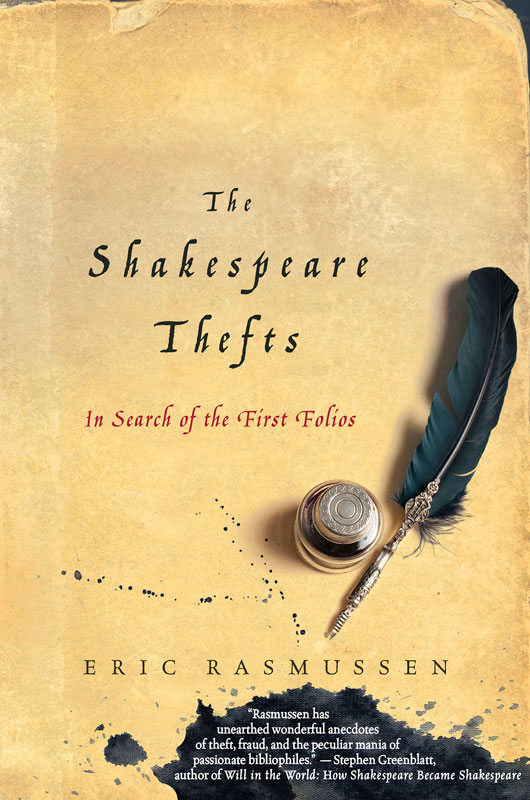The Purloined Book
Eric Rasmussen and his band of “first folio hunters” investigate stolen copies of Shakespeare By Jeremy DibbellJeremy Dibbell is a librarian for social media and rare books projects at the book-cataloguing website, LibraryThing.com.
The Shakespeare Thefts: In Search of the First Folios
By Eric Rasmussen;
Palgrave Macmillan;
240 pages;
jacketed hardcover;
$24
Eric Rasmussen, co-editor of the Royal Shakespeare Company’s Complete Works of William Shakespeare and a professor of English at the University of Nevada, has recently completed (along with Anthony James West, Donald L. Bailey, Mark Farnsworth, Lara Hansen, Trey Jansen, and Sarah Stewart) a six hundred thousand-word reference book, The Shakespeare First Folios: A Descriptive Catalogue. Shakespeare scholars and readers are keenly awaiting its publication, now scheduled for January of next year. To accompany that work Rasmussen also penned The Shakespeare Thefts: In Search of the First Folios. Designed to act something like The Book Nobody Read did for Owen Gingerich’s annotated census of Copernicus’ works, The Shakespeare Thefts is very much a trade publication, designed for readers with little or no background interest in the First Folio. Taken together, The Shakespeare Thefts and the accompanying descriptive catalogue might make a great set, and it seems a lost opportunity (at least for this reviewer) not to have them available at the same time.
The idea behind The Shakespeare Thefts—to profile stolen copies of the First Folio—is a fantastic one, and Rasmussen is at his best when doing just that. The chapters on the Durham University copy, robbed in 1998 and recovered when Raymond Scott walked into the Folger Shakespeare Library with it a decade later, and the Williams College copy, nabbed out of the reading room in 1940 by a fairly dim-witted gang of thugs and returned later that year, are quite well done. Speculation over the copy stolen from Manchester University in 1972 and whether it might be the copy now in the possession of the family of Japanese collector who wrote a provision into his will forbidding access to the book for thirteen years after his death, is tantalizing, but just that, speculation.
Most frustratingly, several of the other chapters don’t actually deal with thefts at all, but simply disappearances of known First Folio copies (even if many of these stories are intriguing in their own right); long digressions into Folio lore (deaths of owners soon after the acquisition of the book and the time the Pope accidentally accepted a First Folio as a gift to the Vatican when he was just supposed to bless the volume); and even stories entirely unrelated to the Folio (like Rasmussen’s purchase at auction of a seventeenth-century portrait which turned out not to be the Bard).
With a bit of tightening up when he veers off topic and more texture when he is on topic, Rasmussen would have better served his readers. He is obviously passionate about his work, but his attempt to emphasize the ‘juicy bits’ is flawed. It is a fascinating topic on its own. Paul Collins’ The Book of William is a better and more entertaining general introduction in this respect, and for the truly curious, Anthony James West’s several volumes on the First Folio or the forthcoming descriptive catalogue are probably the way to go, offering a much deeper treatment of the subject.








